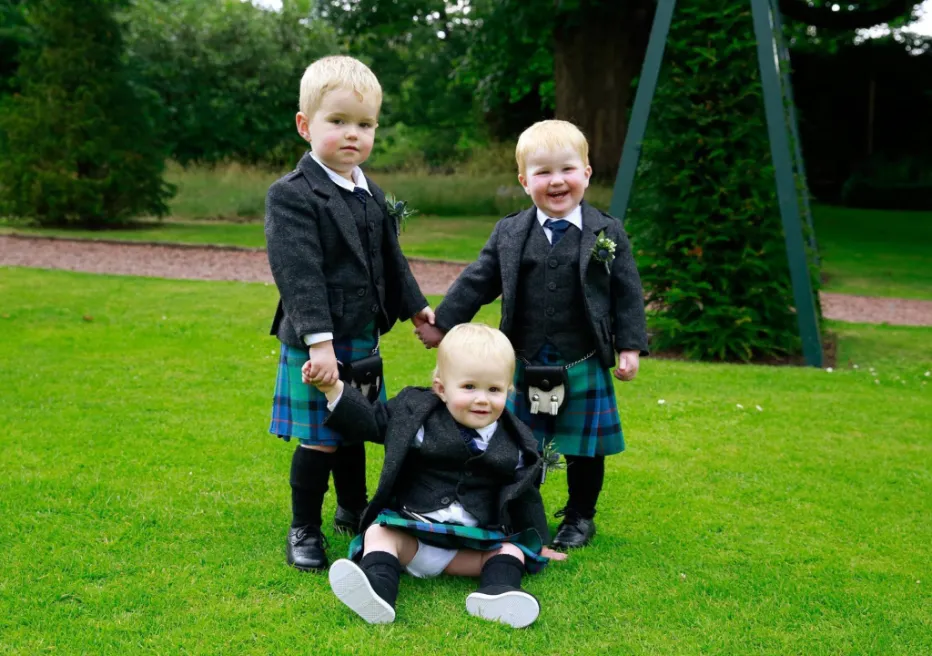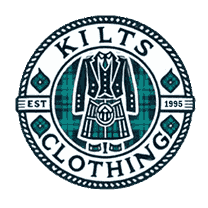Can Kids Wear Kilts?

Kilts for Kids
Kilts for kids are a big part of Scottish heritage and tradition. Traditionally associated with adults, kilts are now becoming popular among children. This trend helps preserve cultural significance and introduces young ones to Scottish attire.
Kids' kilts are designed with the same craftsmanship as adults and are suitable for various occasions. They are perfect for special events, cultural festivals, or a unique wardrobe addition.
A key reason for the rising popularity of kids' kilts is the cultural connection they provide. Wearing a kilt helps children appreciate their Scottish roots. It's about embracing a tradition passed down through generations.
Additionally, kids' kilts are incredibly versatile and practical. They offer comfort and freedom of movement, which is essential for active children. Kilts can be styled for different occasions, always making kids stand out.
History of Kilts
Kilts have existed since the 16th century and originated in the Scottish Highlands. They were designed to keep people warm and allow easy movement. Over time, kilts for kids became a symbol of Scottish culture, worn during important events and celebrations.
Nowadays, kids can wear kilts, too, continuing this proud tradition. Children wearing kilts help preserve and promote Scottish heritage. It's a wonderful way for the younger generation to connect with their cultural roots.
By wearing kilts, kids participate in a long-standing tradition. This practice keeps the history and significance of kilts alive. Children's kilts are crafted with the same care and authenticity as those for adults.
Cheap kids kilt are available in various styles and materials. From traditional wool to modern fabrics, there's something for every occasion. This variety ensures that children can wear kilts comfortably and stylishly.
Benefits of Kids Wearing Kilts
- Comfort and Movement: Kilts are very comfortable and allow kids to move around easily. They are great for playing and running, and their freedom of movement is unmatched by other clothing.
Cultural Connection: Wearing a kilt helps kids learn about and connect with their Scottish heritage. It's a fun way for them to embrace their cultural roots. This connection fosters pride and a sense of identity.
Unique Style: Kilts differ from regular clothes, making kids look unique and stylish. They stand out in any crowd. This unique style is both traditional and fashionable.
Versatility: Kilts can be worn for many occasions, from everyday activities to special events. They are suitable for casual outings and formal gatherings. This versatility makes kilts a valuable addition to any child's wardrobe.
Types of Kilts for Kids
- Traditional Kilts: Traditional kilts are made from wool and feature classic tartan patterns. They are great for formal events, embody Scotland's rich history and heritage, and are ideal for ceremonies and cultural celebrations.
- Utility Kilts: Utility kilts are practical and durable, often made from cotton or polyester. They are perfect for everyday wear. Designed for active kids, they combine comfort with functionality.
- Casual Kilts: Casual kilts are lightweight and easy to wear, making them ideal for informal settings. They are perfect for playdates and casual outings, offering the look of a kilt without the formality.
- Special Occasion Kilts: These kilts come with extra decorations and are perfect for weddings and festivals. Special occasion kilts often feature elaborate designs. They are crafted for memorable events and celebrations.
Choosing the Right Kilt for Your Child
- Size and Fit: Ensure the kilt fits well and allows room for growth. Adjustable waistbands are particularly helpful. A good fit ensures comfort and ease of movement.
- Material: Choose the material based on the occasion and weather. Wool is great for colder weather, providing warmth and comfort. Cotton is ideal for warmer days, offering breathability and lightness.
- Tartan Patterns: Pick a pattern your family likes, or that has special meaning. Tartan patterns can represent family heritage or preference, adding a personal touch to the kilt.
- Customization: You can add personal touches like embroidered initials or unique designs. Customization makes the kilt unique and special for your child. It's a great way to make the kilt truly theirs.
How to Style Kilts for Kids
- Tops: Pair the kilt with traditional shirts, polo shirts, or casual t-shirts. The choice of top can change the look from formal to casual. Mix and match to find the perfect combination for any occasion.
- Footwear: Depending on the occasion, choose boots, shoes, or sandals. Boots add a traditional touch, while shoes or sandals can make the outfit more casual. Ensure the footwear is comfortable and complements the kilt.
- Accessories: Complete the look with sporrans (small pouches), belts, and kilt pins. These accessories enhance the traditional appearance and add a functional element to the outfit.
- Seasonal Tips: Add jackets or sweaters in colder months for warmth. For summer, opt for lighter fabrics and short sleeves to keep cool. It ensures that kilts can be worn comfortably year-round.
Maintenance and Care for Kids' Kilts
Cleaning: Follow the care instructions specific to the kilt's material. Wool kilts often need dry cleaning to maintain their quality. In contrast, cotton and polyester kilts can usually be machine-washed, making them easier to care for.
Storage: To preserve their condition, store kilts in a cool, dry place. Use special hangers to keep their shape and prevent wrinkles. Proper storage ensures the kilt remains in good condition for longer.
Repairs and Alterations: Check for wear and tear regularly. Simple repairs can be done at home, such as sewing on a loose button. For more complex issues, seek the help of a professional tailor to ensure the kilt stays in top shape.
Cultural Considerations and Etiquette
Education: Teach kids about kilts' cultural significance and history. Explain the heritage behind wearing kilts and their importance in Scottish culture. This knowledge helps children appreciate and respect the tradition.
Proper Wearing: Ensure kids know how to wear a kilt correctly. Show them how to position the pleats and fasten the buckles properly. Proper wearing not only looks better but also shows respect for the tradition.
Participation: Encourage kids to wear kilts during cultural events, festivals, and family gatherings. Participating in these events helps them connect with their heritage. It's a fun way to keep the tradition alive and make meaningful memories.
Conclusion
Kids can wear kilts, and there are many benefits to doing so. Kilts for kids offer comfort and style, allowing children to move freely and look unique. They also provide a way for kids to connect with their Scottish roots and embrace their cultural heritage.
Choosing the right type, style, and fit ensures your child looks and feels great in their kilt. From traditional to casual, there are kilts suitable for any occasion. Kids' kilts are a fantastic way to celebrate Scottish culture, whether for everyday wear or special events.
Incorporating kilts into your child's wardrobe can be a meaningful and fun way to honor tradition. Embrace the rich history and versatility of kilts, and let your child enjoy the many benefits they offer.

